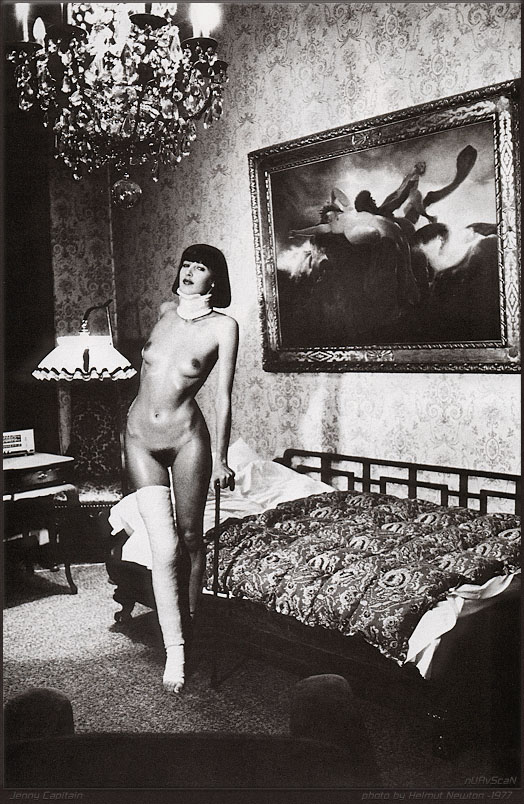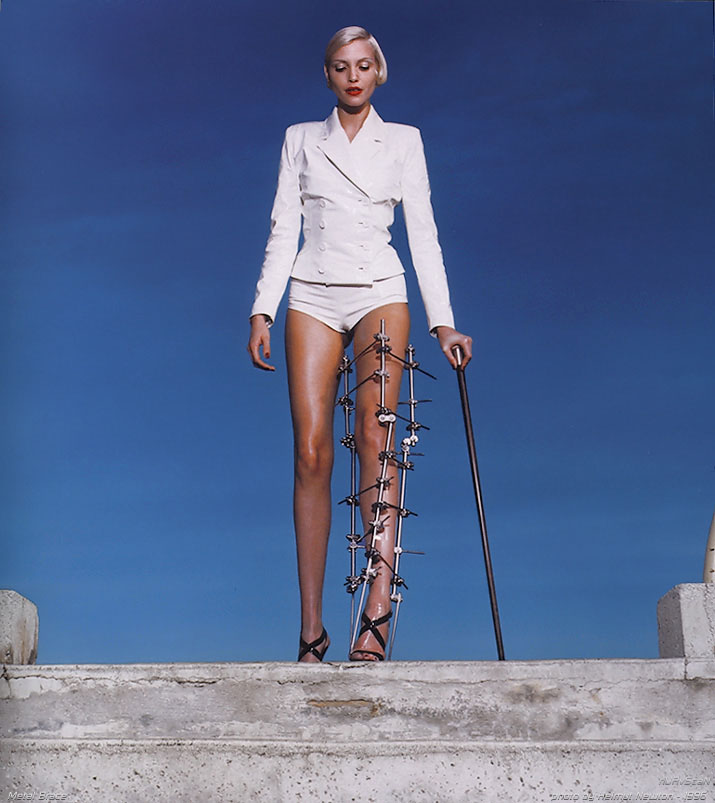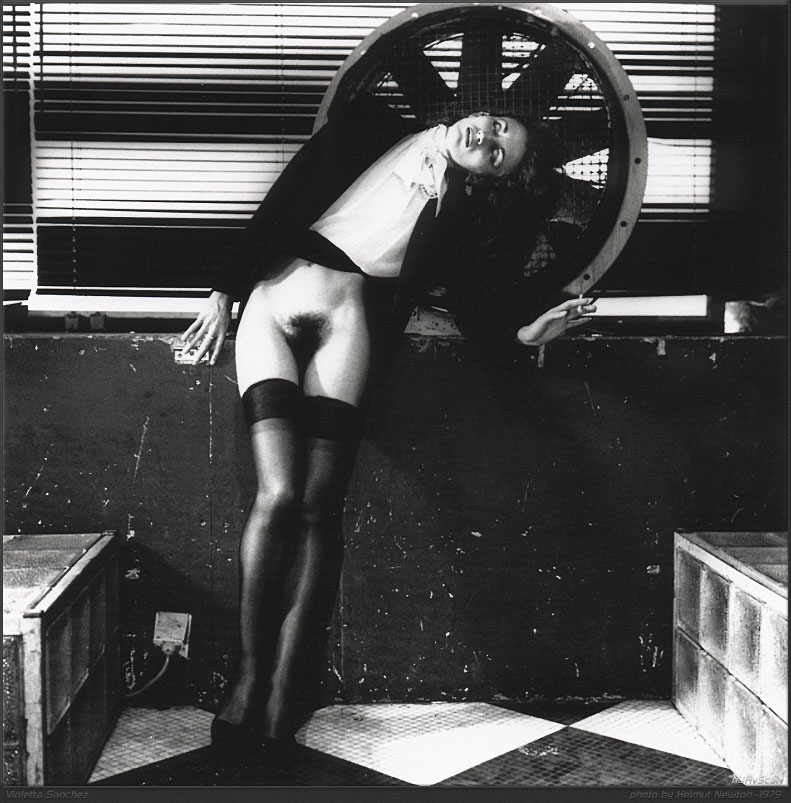THE ART OF PARTIES
Sun. February 8, 2004Categories: Abstract Dynamics

The death of the playboy photographer in a car crash.
Its almost too perfect, something Ballard could have dreamt up, appropriately enough, since he has been writing Newtons photographs for the last thirty years, just as Newton has been photographing Ballards fictions. They conjoin most explicitly in Cronenbergs version of Crash , which, for Iain Sinclair, is flick book Newton, an actualization of the narrative implicit in Newtons images.
Newton and Ballard, twin celibate machine begetters of all neuromancers. Impossible not to hear the anhedonic neurasthenic party of For Your Pleasure, for instance, as Newtonian through and through (and that cover image is pure Newton). Ferry, entranced and enraptured by those posed and poised Delvaux statues, those unravishable beauty queens, appreciates what Newtons every image announces, and he bequeathes the lesson to all his sucessors (Sylvian, Strange): true glamour is aristocratic. Cruel and Nietzschean.
Inevitable that Visage should turn to Newton for the cover images to The Damned Dont Cry and The Anvil. Its always party-time for neuromancers, even if enjoyment is usually fastidiously declined, since what matters is the ostentatious consumption of leisure time. Peter York compared the New Romantics to their contemporaries, the Thatcherite Tories, but, in truth, the New(tonian) Romantics eschew neo-conversativism just as utterly as they reject socialism and sixties egalitarianism. They project a universe of Art, not work: life as an aesthetic project, way too studiedly languid for neo-con business. An endless photo opportunity.
The Damned Dont Cry. What a perfectly Newtonian title that is. No tears for these hyper rich kids, only carefully cultivated psychopathologies. Ballard: In Newton’s work we see a new race of urban beings, living on a new human frontier, where all passion is spent and all ambition long satisfied, where the deepest emotions seem to be relocating themselves, moving into a terrain more mysterious than Marienbad.
Newton treated women like objects, obviously. Yet his logic is pursued to such a point of perversity that it is would be churlish and gauche to impose obsolete sexual political moralisms onto his work, in part because in really treating women as objects, he desubjectifies them to the extent that these physically striking women positioned in such a way that they are divorced from the bodies they display with such flagrant interest (Sinclair) are no longer sexual. Ballard again: Newton
desexualizes his subject matter. His photographs drain the libido from the once charged spaces of the late 20th Century, from hotel bedrooms and luxury bathrooms, and from those penthouse apartments where unwatched porn films play behind the heads of people with more pressing concerns than pleasure or pain.
Yes, his bodies are far beyond the pleasure principle, indifferent to pain, but is it quite right to claim that Newton drains the libido from the environment? Wouldnt it be more accurate to say that, rather like the Ballard of The Atrocity Exhbition and Crash, in fact, Newton evacuates the organic body of libido only to distribute it across the surrounding spaces? If the bodies themselves cease to be the exclusive site of allure, then the accoutrements (the sticks, the calipers, the silk, the nylon, the mahogany) become intensely eroticized.

O God please let me die beneath her heels.
Newton doesnt doubt for a moment that eroticism is profoundly unnatural. Bodies acquire what charge they have only from becoming elegantly contorted into the most excruciating postures .The foot in heels: Newton takes an almost medical interest in the savage twisting of bone.

The punishment of luxury.

The Lucid Dreamer, J.G. Ballard
Crash, Iain Sinclair
It’s starting to show…
Kidnap yourself.
Reach for the switch.
C’mon!
Que?
The lyrics to a popular song, your honour.
Granny says I’m not to look at your page any more.
Then you should read mine, child. I have sexually provocative images of Keith Ansell-Pearson, and shocking news of plagiarism on the Suzhou.
Excellent post. Especially the remark on how “eroticism is profoundly unnatural.” The image of the heel in the shoe makes this point with perfect simplicity: “the savage twisting of bone.” . . . . Please write more on this subject. Unnatural pleasure, pleasures that are bad for you, obsession/destruction, the sublime as aesthetic category, contorted figures as beautiful figures, twisted positions as intensely pleasurable, the mis-use of leisure . . . .
Thanks, Dom….
But it’s about as observed a view of the aristocracy as you’d get at a tea party attended by stuffed alligators. Isn’t the target with Ferry/Ure/etc more like Maxfield Parrish and other fantasias on chivalric themes? For the Sacher-Masoch you have to go to proto-punks like Lou Reed.
The New Romantics are about taking control and keeping distance by pretending to be the fulfillment of the wish for an attentive (sexually altruistic?) man.
But yeah, Ferry/Ure etc did like to flirt with kinkiness, and before “Art of Parties” Sylvian was playacting about gentlemen taking polaroids. I guess I just wanted to underscore that the class stuff is fantasy, which makes it just about undistinguishable from the rest of popular music…